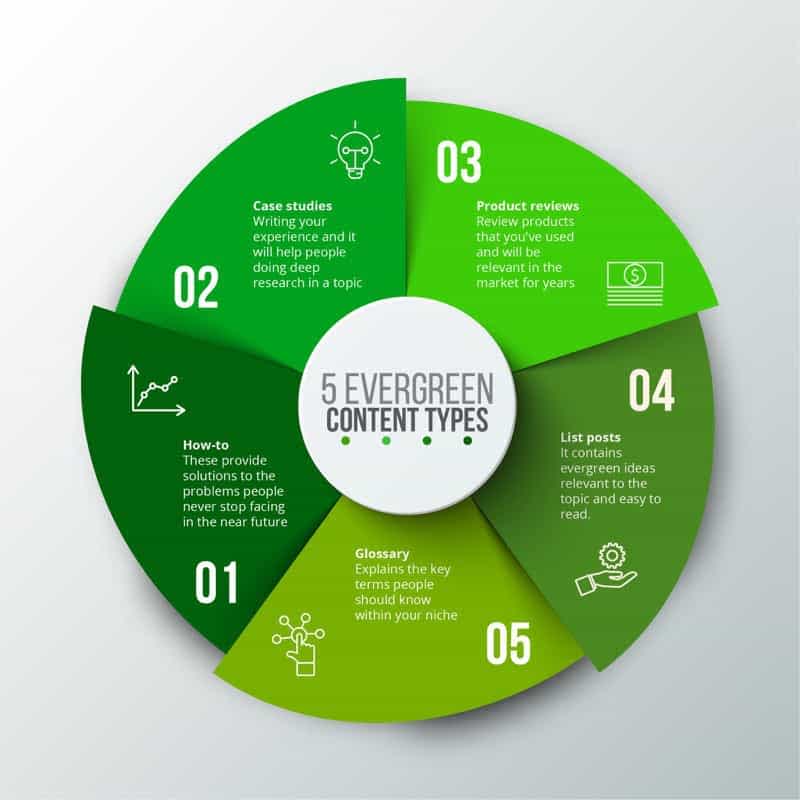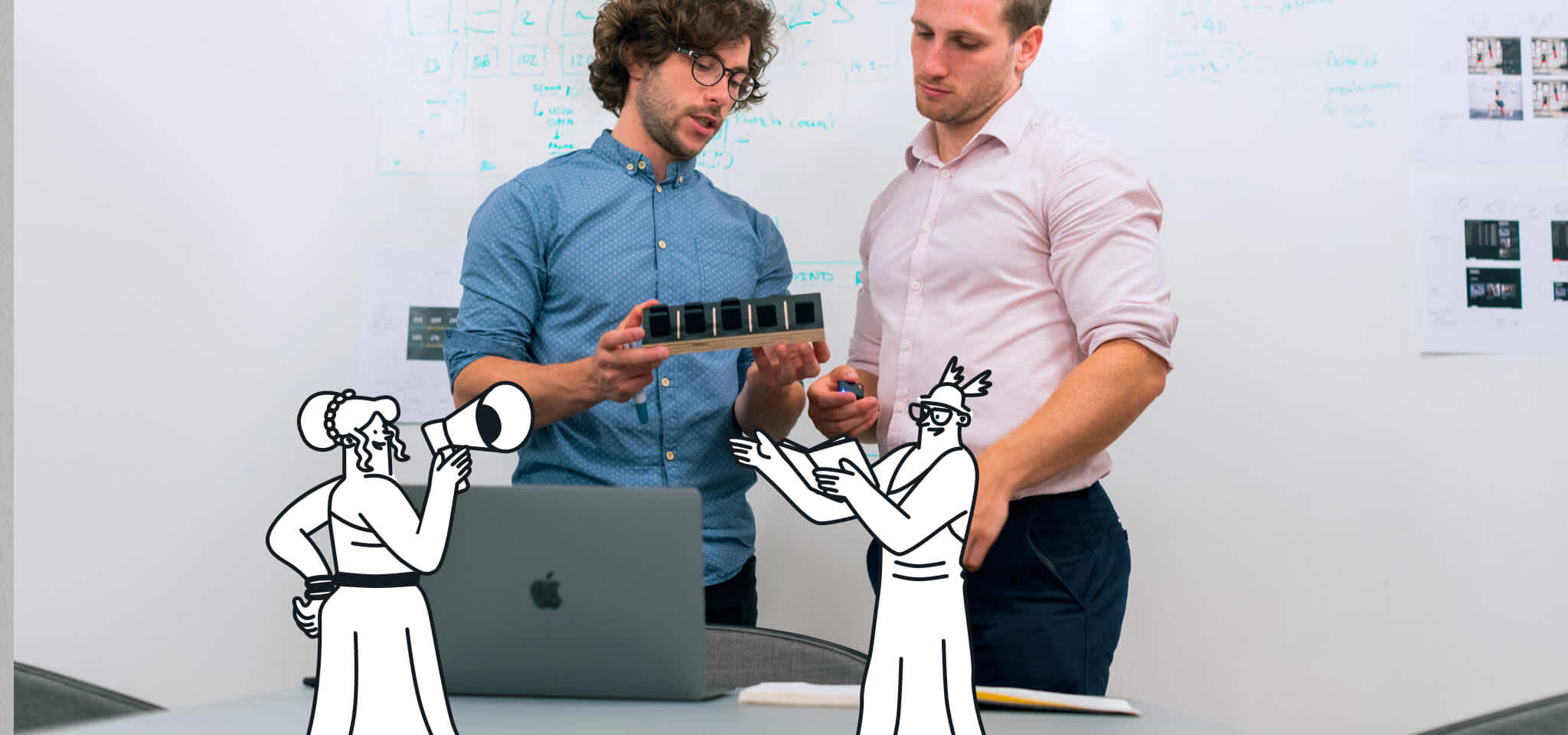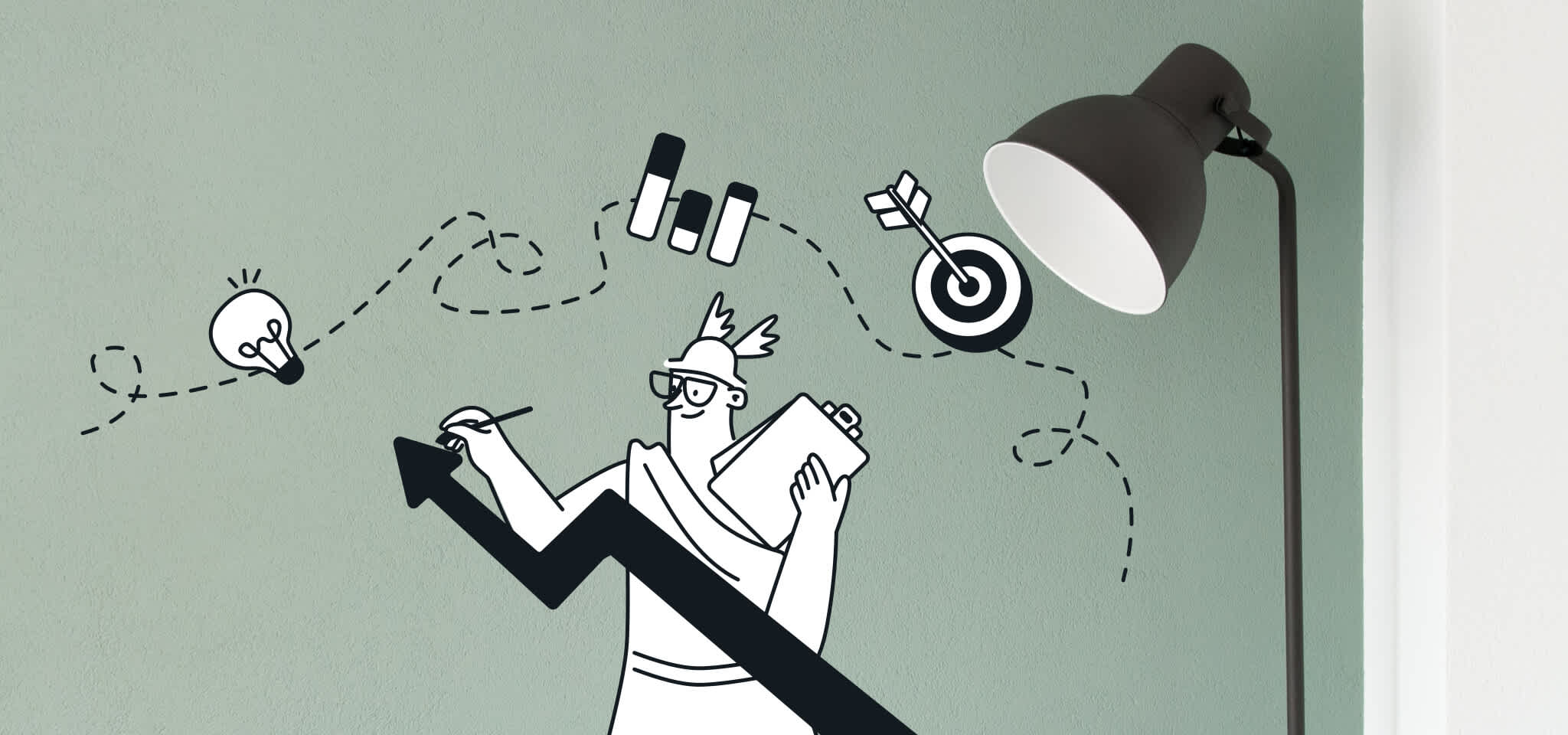Email best practices
10 tips to convert leads into customers with email marketing
In an increasingly expensive marketing landscape, lead nurturing is becoming the rising star of low-cost strategies to convert subscribers into customers.

PUBLISHED ON
Isn’t it funny that a customer interested in your product is called a “lead”, but it’s really you that does all the leading? From awareness to consideration, conversion, loyalty, and advocacy, it’s really us marketers leading the dance towards a sale.
And with consumers being bombarded by messaging in an increasingly crowded marketing landscape, you can’t blame them. If left to their own devices, leads will go from hot, to tepid and eventually cold. Lead nurturing is a critical component in growth hacking, a growing branch of marketing that allows you to use creative, low-cost strategies to help your business acquire and retain customers.
Rather than spending resources on forever finding new customers, it’s actually more cost-efficient to nurture existing leads more effectively. To do that, we need to continually deliver valuable content, escalate engagement, and optimize a lead generation framework that takes the buyer’s persona into consideration.
Sound like a lot? Using years of experience and trial and error we have developed a 10-step lead conversion waltz for you to practice and hone with your customers towards a big finale. Without further ado, take our hand and let us begin.
Table of content
1. Consistently deliver value
2. Escalate engagement
3. Segment your audience
4. Control your marketing cadence
5. Keep it simple
6. Maintain a clean list
7. Leverage evergreen content
8. Add lead capture forms to your website
9. Determine how your first few emails should look
10. Build up engagement in sequences
Why nurture email leads?
Many leads begin not as customers interested in your products, but as cooler leads signing up looking for information in a certain industry or process. For example, a business signing up to an affiliate networking newsletter may not be looking for software (yet), but instead tips on how to make the most from their current affiliate partnerships.
It’s your job to then nurture those leads using a solid email marketing strategy, coupled with automation sequences to convert those subscribers into warm leads and eventually customers.
A widely accepted misconception is that driving email subscribers to conversion is about somehow forcing them up to the next stage in their buyer journey, but that’s not quite accurate.
How to turn leads into customers
The trick to nurturing a lead is ensuring your communication is always in sync with their stage in the buyer journey, not to force them onto the next one.
Let’s look at how you can achieve this.
1. Consistently deliver value
At the start of their customer journey, the lead has most likely signed up because they want to learn more. They’ve found the topic of your newsletter interesting or want access to your downloadable resource or your free webinar. They’re not necessarily looking to purchase anything now or even anytime soon, but they want to engage with the industry.
This will be the case for around 80% of your new leads. The goal here is to keep your content useful so they stay on your email list. Keeping those leads warm and happy can lead to conversions much later down the line and reduce churn, but only if you use your email campaign to show you’re an authority on the subject and keep them engaged and coming back.
The goal here is to enable your list growth through consistently providing valuable information. So when the time comes for them to look at purchasing, they become your customer, not someone else’s.
2. Escalate engagement
Let’s assume you’ve already completed step one and have a list of warm, interested leads who regularly open your newsletters and engage with the content (you can track this through your email marketing software). After showing them why you’re a subject authority, the next step is showing them how your product helps achieve their goals.
The biggest mistake you can make at this point is pushing conversion-oriented emails at the expense of providing value to your customers. Thinking that this will help your conversion rate is like thinking adding more buttons to a landing page will increase conversion. Spoiler alert – it won’t.
For example, sending an email that’s simply sales-based with the button: “Sign Up Now!” is far less effective than an information-driven email with an embedded signup call-to-action (CTA) at the end.
Most subscribers who are just on a newsletter email list, rather than a free trial or product-based segment are probably nowhere near converting. So any conversion-driven emails need to provide equal value to customers who simply want to learn more. The golden rule is 80/20 – provide 80% quality/useful content and 20% sales-based or product-based information.
There are a few ways you can drive interest while also encouraging people to take the next step in the buyer journey:
Discuss the importance of a feature you provide to the market by asking what benefit and value this will give your subscriber.
Offer gated content such as an ebook or free tool where they have to fill in a data capture form or click a link in the email itself. These are effective signup tools, but are also effective within the list itself.
Providing access to a free webinar or event that has a deadline increases the sense of urgency felt by the reader to sign up.
Temporary promotions are on the more salesy end of the spectrum (get 15% off before March 2022!), but can be effective when coupled with the above methods.
And don’t stop there! Many people think that once they’ve got the customer to enter the next stage of the journey, their work for that part is effectively “done”, but the next step is follow-up. Ensure you get some sort of commitment from the subscriber before moving them onto the next step of the buyer journey sequence.
3. Segment your audience
Understanding your buyer persona and segmenting your audience is an important step in driving content to the right subscribers at the right time. In fact, it could be the most valuable thing you do with your potential customers.
These segments can be anything, but best practice is to base them on what’s important to your customers or buyer persona, rather than their place in the buyer journey or lead score.
The trick is to only choose a few segments for your list and review them frequently. For example, if someone signed up for a newsletter, they should receive more general information than a person who has registered for a free trial.
Look at your CTAs – each link should be different depending on the persona and segment. If two email sequences end in the same CTA, then these should be reviewed and merged.
By drilling down and personalizing your email message to specific segments or even individual customers, you can be sure the information is reaching the right buyer persona at the right time.
4. Control your marketing cadence
A marketing cadence essentially relates to balancing your subscribers’ buyer journey and your email frequency. Controlling your marketing cadence is all about timing. When is the right time for your subscriber to receive this specific information?
If you push too hard, they might unsubscribe or have a worse opinion of your brand than they did prior to signing up. If you push too little, your competitors may take your hard-earned spot in their inbox. Don’t put out communications for the sake of it. Think about the why and, importantly, the when.
Consider your email sequence in the broader scope of your marketing strategy. How can you coordinate with other channels to create a multi-channel approach? How can you keep your business at the forefront of your customer’s mind when they’re seeking a solution?
5. Keep it simple
With the ability to automate comes the ability to overcomplicate. The more automated sequences you have, the more costly it can be, and over-segmentation can actually lead to a drop in subscribers and performance.
Keep your segmentation and automation to manageable amounts. With too many sequences, it can also be harder to spot human error, like a broken link or a mass email to the wrong people. The more we automate, the more we can lose that human touch and keep churning out the same errors over and over. If it’s too complicated for you to follow, it’s definitely too complicated for your customer.
6. Maintain a clean list

List management is the cornerstone of a healthy domain.
For every new lead you gain, you need to think about the leads that may drop off. Disengagement is a classic issue with newsletter subscribers in particular and it can hurt your campaign and business badly.
It’s important to think about this when considering your overall strategy. Continually sending out emails to people who won’t engage or convert will cost you money. With no effort to identify what’s causing your subscribers to disengage, you’re unlikely to be able to refine your email marketing to help negate this issue.
If you have business in the EU, then GDPR means you have to offer an unsubscribe link, but you can use this to your advantage. When they unsubscribe, give the customer a few options that explain why they’ve chosen to unsubscribe. This could include too many emails, no longer interested, purchased elsewhere, and so on. This information could be invaluable when it comes to planning your next automation sequence.
For your cold leads who are no longer opening emails but haven’t yet unsubscribed, it’s worth running re-engagement campaigns every 6-12 months. Studies have shown that 45% of recipients who had received win-back emails read subsequent messages – that’s a massive chunk of people you could lose.
Re-engagement emails don’t need to be anything intensive or in-depth, a simple message to your non-openers like, “We’re cleaning up our list, and you haven’t read the past X emails. If you’d like to stay on board, please click here.” Utilizing these two methods together can result in a much tighter, cleaner email list.

Kicking contacts off your list feels counter-intuitive but could win back business.
7. Leverage evergreen content
Evergreen content is simply content that maintains its value for a long time before becoming outdated. This could be the most important type of content to leverage because it will continue to be relevant for a long time. Even if you don’t update your email list or blog posts regularly, evergreen content will continue to bring value to your customers, subscribers, and website. Incorporating this content into your email campaign can take a huge weight off your shoulders.
You can leverage evergreen content in some of the following ways:
Build a welcome sequence with high-value evergreen content. You could start this sequence with one email a week before later spreading out the sequence to once a month after the subscriber has settled into your email list.
On top of your newsletter flow, build one or two evergreen nurturing sequences. They’re typically two or three emails long and contain your very best resources and content. You can have a single mailout for every newsletter signup, or build different flows depending on the subscribers’ interests. These can be offered to your subscribers in your initial newsletter campaign sequence before moving them one step further in the buyer journey.
Have a theme for each newsletter so you can re-use older content and offer highly contextualized value. For example, say your product is an affiliate marketing software. Your newsletter theme could be a five-step process in choosing the right affiliate software or looking for the best affiliate features, remembering your 80/20 content rule.
Evergreen content can be effective for cold emails, too, with cold leads more likely to open an email if it sounds like it’ll deliver value and not just a sales pitch.

Evergreen content is worth its weight in gold.
8. Add lead capture forms to your website
The next step is contextualizing your signup. You probably had a standard “sign up to our newsletter” CTA on your website (or something very similar) that resulted in your existing email list, which is a great first step. However, this list will be very diverse as it’s a “catch-all” type signup.
If you’re looking to drill down further, multi-step lead forms typically convert better. However, you could lose valuable future leads who are just looking for information in the process.
Using different email capture tools and welcome sequencing can add value depending on where the subscriber signed up to your list. For example, one of your lead magnets could be, “Sign up to our newsletter and receive a free ebook download.”
9. Determine how your first few emails should look
Your first few emails are arguably the most important. They will show your subscribers that you’re a valuable addition to their inbox and drive them to continue opening them and engage with your content.
However, these leads haven’t been qualified or moved to the appropriate place in their buyer journey yet, but you still want to be more urgent than are at the beginning. Most people expect more emails during the first month of signing up, but if you deliver too regularly to their inbox, they will get annoyed with the “spam.”
Start with a sequence of four emails delivered weekly before moving to a once-a-month outreach. Remember to contextualize the email based on the lead magnet. For example, if subscribers downloaded a resource about SEO, you’ll want your sequence to be about SEO and content rather than sales and operations.
This is also where you can push that valuable gated content (webinar signup, ebook download) to drive the subscriber to the next phase of the buyer journey.
This initial four weeks is a great way to weed out those who just signed up with no real intentions from subscribers who have the potential for conversion. That way, you can work out a sequence or automation that drops unprofitable subscribers fairly quickly in the process.
10. Build up engagement in sequences
We’ve talked a little about having different automation sequences, but once again it’s important not to overcomplicate things. Think about two or three sequences based on the initial engagement triggers, and try to use pre-built email templates as much as possible.
For example, you could have:
A product-focused sequence for webinar signups and other product-specific triggers.
An education sequence for lower touch triggers like resource downloads. By offering solid resources, information, and actionable content, you show yourself to be an authority in the industry.
You could then look to segment each of these sequences with two or three micro-segmentations based on company size, revenue, or industry.
Wrapping up
In the end, your email marketing strategy should run like a well-oiled machine, delivering valuable content and offering actionable strategies or advice. And eventually, whether it’s seven days or seven years later, you will be rewarded with healthy conversions.








